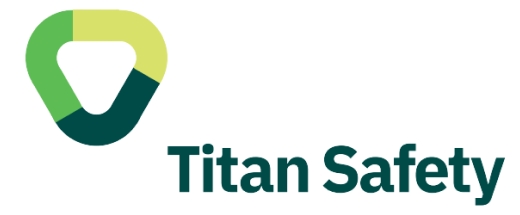
Effectively Cleaning Up Land Oil Spills: A Comprehensive Guide
Understanding the Basics of Land Oil Spills
Oil spills are a serious workplace safety and environmental concern. Often just thought of in bodies of water, oil spills on land can have significant impacts on the surrounding ecosystem and pose risks to worker safety. In this blog , we'll explore the basics of land oil spills, including their causes, types, and effects.
Understanding the basics of land oil spills is crucial for developing effective prevention and response strategies. By being aware of the causes, types, and effects of these incidents, we can work towards minimizing the environmental and public health impacts of land oil spills.
Equipping Yourself with the Right Oil Spill Kit
When dealing with an oil spill, having the right equipment on hand can make all the difference. An oil spill kit is a essential tool that contains the necessary materials to effectively clean up and contain an oil or chemical leak.
Titan Safety’s range of spill kits are designed to address a variety of spill scenarios, from small drips to large-scale incidents. These kits include absorbent pads, booms, and other specialised equipment to soak up hydrocarbons and prevent it from spreading.
Choosing the appropriate oil spill clean up kit depends on the size and location of the spill. Smaller spill kits may be sufficient for minor leaks in a workshop or garage, while larger commercial or industrial settings would require more comprehensive spill containment kits.
Regardless of the size, every oil spill kit should equip the user with the knowledge and tools to act quickly and safely. Proper training on how to use the kit components is crucial to ensure an effective and environmentally-responsible clean up.
By having an oil spill kit on hand and knowing how to use it, you can be prepared to respond swiftly and mitigate the damage caused by unexpected leaks or spills.


Step-by-Step Guide to Cleaning Up a Land Oil Spill
When an oil spill occurs on land, the cleanup process requires careful planning and execution to minimise environmental damage. Here is a step-by-step guide to effectively clean up a land-based oil spill:
1. Assess the Situation: Evaluate the size and extent of the spill, the type of oil involved, and the surrounding environment. Assess the liquid spilled by using Safety Data Sheets (SDS), labels, placards and registers. This information will help determine the appropriate cleanup methods and equipment needed.
2. Secure the Area: Establish a perimeter around the spill site to restrict access and prevent the oil from spreading. Deploy booms or absorbent materials to contain the spill and stop it from reaching nearby drains, waterways or sensitive areas.
3. Identify Hazards: Assess any potential safety risks, such as slippery surfaces, flammable vapours, or the presence of hazardous materials. Ensure that all personnel are equipped with proper personal protective equipment (PPE) before commencing the cleanup.
4. Recover the Spilled Oil: Use absorbent materials such as booms, pillows, pads, rolls and floorsweeps so clean up the spilled liquids.
-
Booms - to contain, absorb or divert the spill
-
Pillows - to contain and absorb the spill
-
Pads - to absorb and clean up the spill
-
Ground and floor absorbents - absorb large surface spill areas
5. Dispose of Waste Properly: Ensure that all recovered oil, contaminated materials, and hazardous waste are disposed of in accordance with local regulations and environmental guidelines.
By following this step-by-step guide, you can effectively clean up an oil spill and minimise the environmental impact. Remember to prioritise safety, use the appropriate equipment and techniques, and work closely with local authorities and environmental agencies throughout the process.
Proper Disposal of Contaminated Materials After an Oil Spill in Australia
When dealing with the aftermath of an oil spill in Australia, the safe and responsible disposal of contaminated materials is of crucial importance. Australian regulations mandate specific protocols to ensure environmental protection and public safety.
Contaminated materials from an oil spill cleanup may include absorbents, personal protective equipment (PPE), oily debris, and contaminated soil or water. These items must be handled carefully and disposed of through approved hazardous waste channels.
In Australia, oily waste from spill cleanups is typically classified as controlled waste. This means it requires specialised transport, treatment, and disposal methods overseen by licensed waste management providers. Improper handling or disposal can lead to further environmental damage and legal penalties.
Businesses and cleanup crews should work closely with local authorities and waste management experts to ensure all contaminated materials are identified, contained, and disposed of according to Australian environmental protection laws and best practices. Taking the right steps in the waste disposal process is crucial for mitigating the long-term impact of an oil spill incident.
Titan Safety’s Range of Oil Spill Kits
Titan Safety stock a wide range of spill kits and absorbents that are purpose built to deal efficiently and effectively with oil spills in the Australian workplace. Options include portable bag spill kits - suitable for spill cleanups on the go, or wheelie bin spill kits, suitable for storing in warehouses or shipping yards for larger oil spill clean ups. Click here to view our wide range and be prepared for an oil spill and improve workplace and environmental safety.
